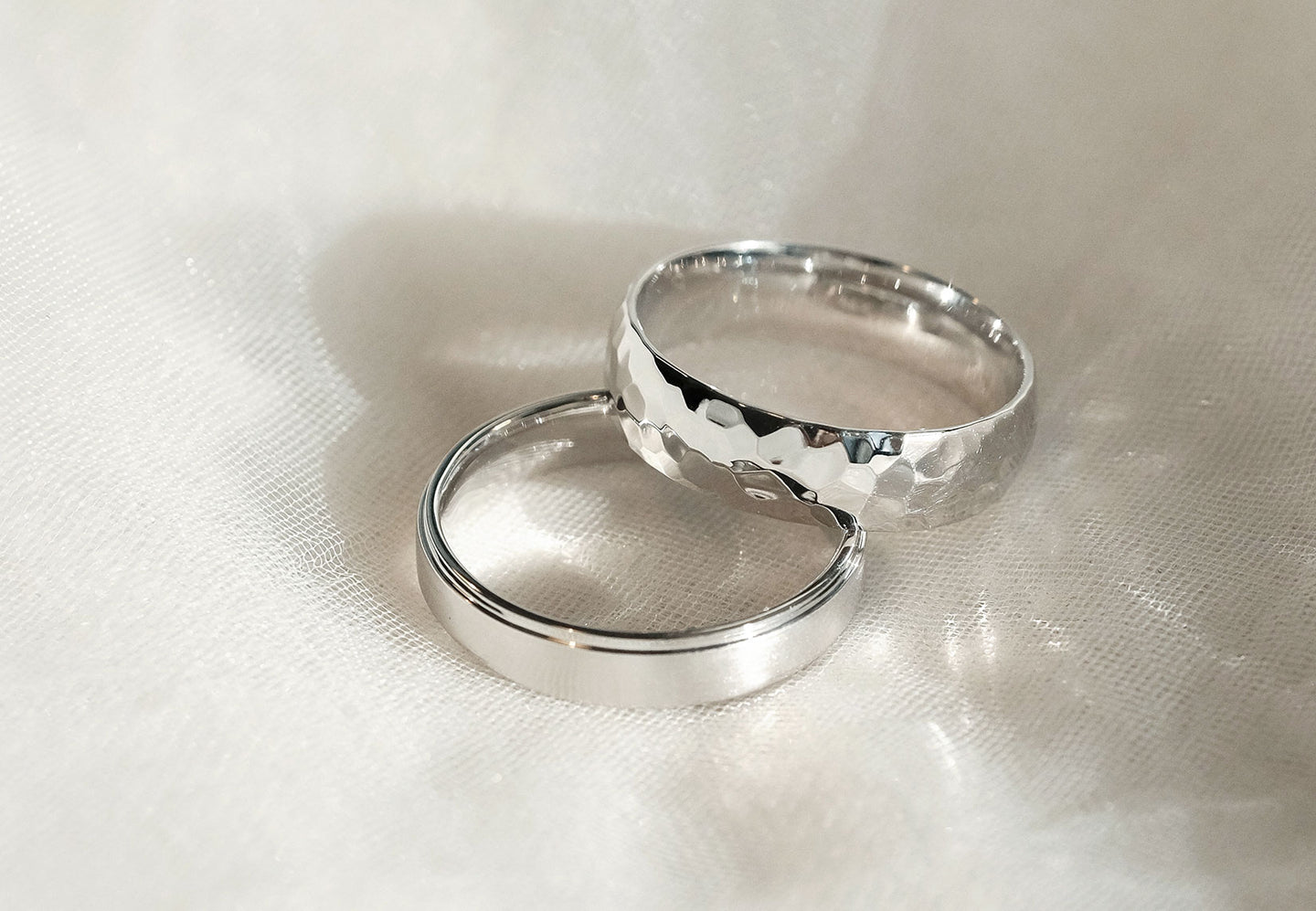RISK-FREE 30-DAY RETURNS + LIFETIME GUARANTEE
Jewelry shopping can be intimidating. That’s why we started Ask Holden, our blog where we answer your FAQs, break down scary industry lingo, and guide you in finding the perfect piece of jewelry.
White metals are an increasingly popular choice for wedding rings, but they can be confusing. Platinum and white gold - they look the same, so what exactly *is* the difference? What are the pros and cons of each? Why is it called white gold when it really looks silver? Today, we’re talking platinum vs white gold, and how the two differ. They’re both great choices for a wedding ring, so knowing a bit more about each might help you pick one to put on *that* finger.

White Gold
White gold rings, like yellow gold and rose gold rings, are made of pure gold mixed with an alloy of other metals. 14 karat gold is 14 parts gold out of 24 total parts, 18 karat is 18 parts gold, and so on. Percentage wise, 18 karat is 75% gold, 14 karat is 58.3%, and 10 karat is 41.6%.
So why do white gold rings look silver? The industry standard is to dip white gold rings in rhodium, giving the rings their silvery color. Without the rhodium plating, you get a hint of the yellow color from the yellow gold in the alloy. Rhodium plating makes all white gold rings look the same - whether your ring is 14k or 18k white gold, it will appear silver in color. This is different from rose gold and yellow gold rings - to learn more about how karat affects color, check out our post on everything to know about karat. Rhodium plating can also be helpful if you have some sensitivity to nickel, which is a common alloy metal used in white gold rings. The plating acts as a protective barrier, keeping the nickel from irritating your skin. If you’re allergic to nickel and worried about any nickel in your ring, feel free to reach out to us at help@hiholden.com, and we’d be happy to make you a gold ring that is completely nickel-free.

Platinum
Platinum rings, on the other hand, are naturally white (aka silver) in color. Platinum is the world’s most unreactive metal, making it a popular choice for catalytic converters in cars. It’s also extremely rare - all the platinum ever mined would only fill one inch of an Olympic swimming pool, whereas all the gold ever mined would fill three pools. You also need a lot more of it - in order for a ring to be certified 950 platinum, the alloy must be 95% platinum or higher. Platinum is also extremely heavy - a six inch cube of platinum weighs 165 lbs!
When you choose platinum jewelry, you don’t have to worry about any degrading of your ring: a scratch just moves the metal to one side or the other (rather than actually wearing away the material). A note on scratching: all rings made from precious metals (even a particularly durable metal like platinum) will scratch through daily wear and tear. Eventually, scuffs and scratches blend together over time and give your ring a lovely sheen. Dirty ring? Check out our post on how to clean your wedding ring. Platinum is also hypoallergenic.
Shop Platinum Wedding RingsThe Takeaway
So, between white gold and platinum - which metal is better for you? It totally depends. Platinum’s density and rarity makes it more expensive than white gold. Some people prefer platinum because it has a little more weight to it, and you don't have to worry about the rhodium plating on white gold naturally wearing away over time. Others like that a white gold ring feels a little lighter on your finger (and your wallet). At the end of the day, the choice is totally up to you - you can’t go wrong.
Questions? Give us a shout at help@hiholden.com or a ring (pun intended) at 646.722.6817.


